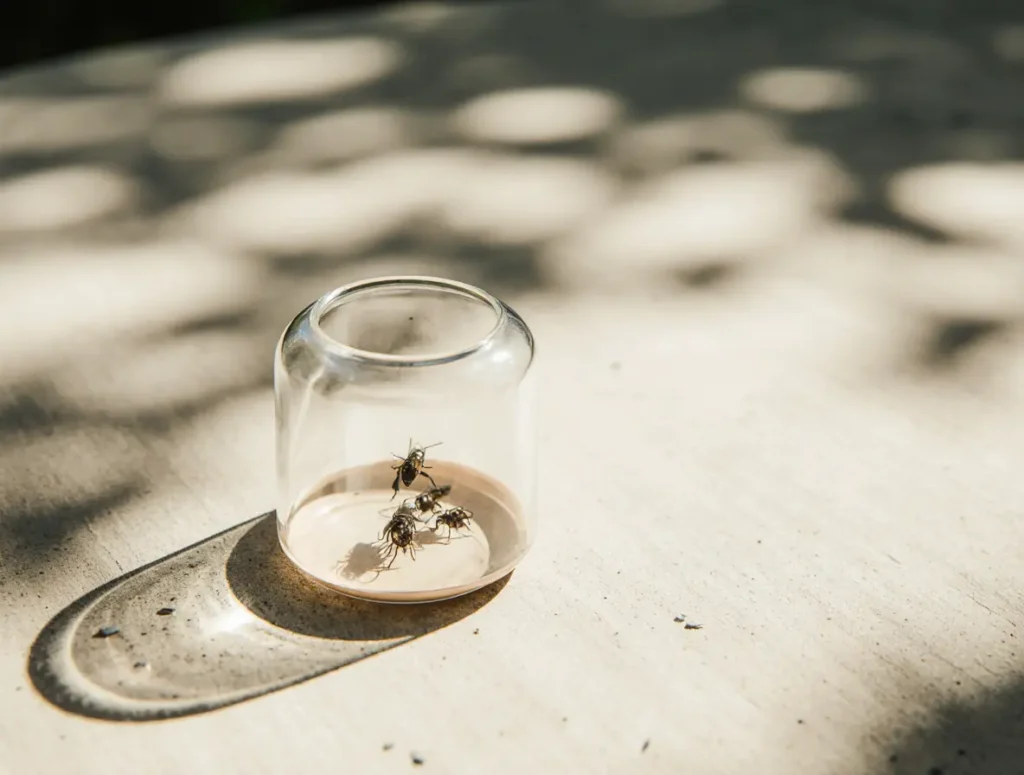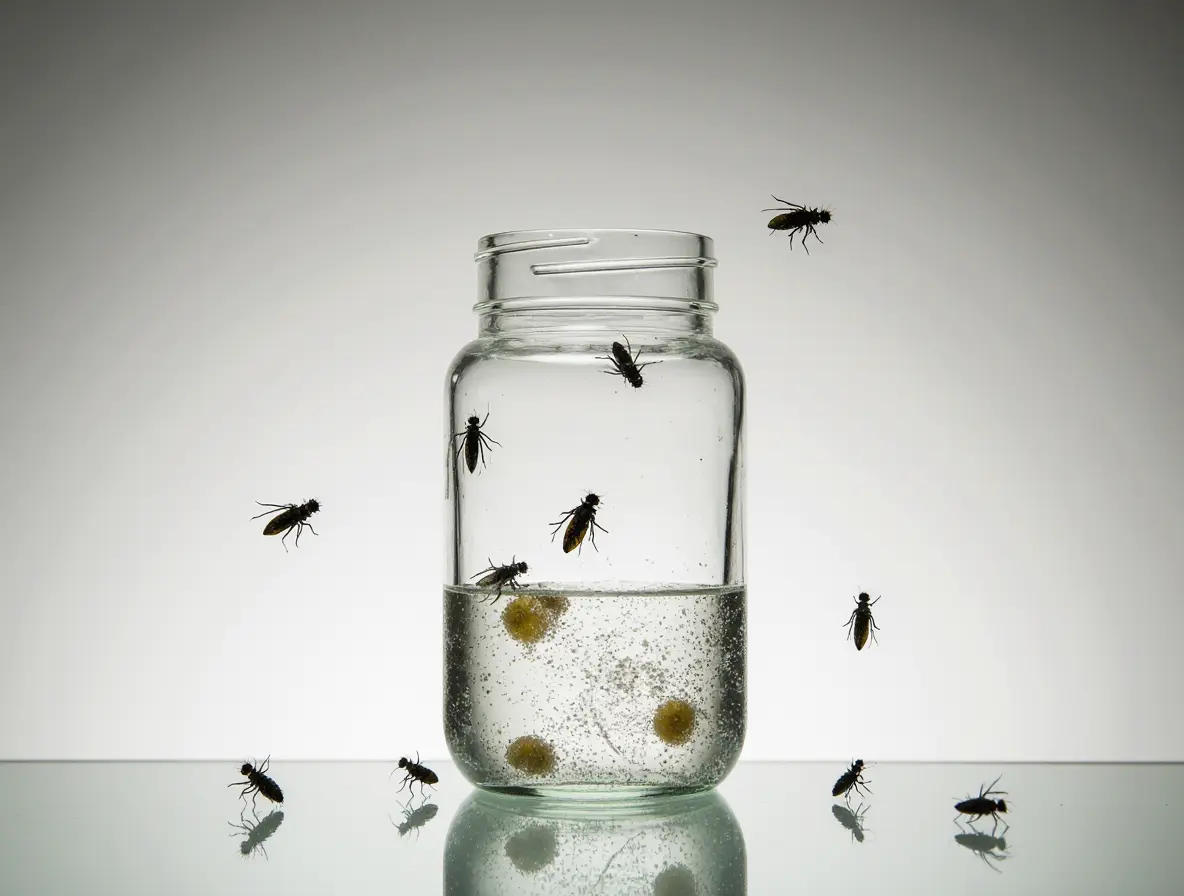Have you ever found yourself waving your hands frantically at pesky flies in the kitchen or on the patio? You’re definitely not alone. Flies can turn an otherwise perfect day into an annoying battle. But guess what? You don’t have to rely on harsh chemicals or expensive gadgets. Instead, you can craft your own homemade fly trap—and yes, it’s easier and more effective than you might think. Let’s dive into why these DIY solutions work, how to make them, and what you should know before getting started.
Table of Contents
Why Go Homemade? The Allure of DIY Fly Traps
Think about your grandmother’s kitchen. Chances are she didn’t have high-tech bug zappers or sprays packed with chemicals. Instead, she relied on clever homemade solutions—traps so simple yet surprisingly effective. Choosing a homemade fly trap is about more than saving money; it’s about control, creativity, and caring for your environment.
Imagine this: your kitchen is like a carefully tended garden, and each homemade trap is a small, eco-friendly scarecrow, silently guarding your space. You’re not just stopping flies; you’re reclaiming your home with a personal touch.
By making your own traps, you reduce household waste, avoid harmful toxins, and often discover a sense of satisfaction. It’s a bit like baking your own bread—it may take a little effort, but the results are worth it.
How Do Homemade Fly Traps Work?
Have you ever wondered why flies fall for these traps so easily? It’s all about exploiting their natural instincts. Flies are drawn to food odors, moisture, and sometimes even light. Most homemade fly traps rely on a simple principle: attract and capture.
Think of it like a carnival claw machine: the prize (food scent) is irresistible, but once the fly enters, getting out is almost impossible. By combining household items like sugar, vinegar, or fruit, you can lure flies effectively into a cleverly designed container.
Some traps drown them in liquid, while others use sticky surfaces. The magic lies in the bait and the clever design that keeps them from escaping.
Top Homemade Fly Trap Designs You Can Make Today
Now, let’s roll up our sleeves and explore the best DIY fly trap ideas. Each of these traps uses items you probably already have at home.
The Classic Bottle Trap
What you need:
- An empty plastic bottle
- Sugar and water or fruit scraps
- Scissors
How it works:
Cut the top third of the bottle off. Invert it and place it like a funnel into the bottom part of the bottle. Pour in a sugary bait mixture or a piece of ripe fruit. Flies are drawn in, but they rarely find their way back out.
This trap is great because it’s mess-free, safe for kids and pets, and can be placed almost anywhere.
The Vinegar and Dish Soap Trap
What you need:
- A small bowl or cup
- Apple cider vinegar
- A few drops of dish soap
How it works:
Fill the bowl with vinegar and add dish soap. The sweet vinegar smell attracts the flies, and the soap breaks the liquid’s surface tension, causing flies to sink.
This method is especially handy in kitchens and dining areas since it’s discreet and quick to make.
Sticky Cardboard Trap
What you need:
- Cardboard or heavy paper
- Honey, syrup, or sugar water
How it works:
Coat the cardboard with honey or syrup and hang or place it near fly-prone spots. Flies land on the sticky surface and get stuck.
This trap is budget-friendly and surprisingly effective, although it might look less appealing in your living space.
Choosing the Right Bait: The Secret Ingredient
A trap is only as good as its bait. Flies are most attracted to sweet, fermenting, or decaying scents. Here are some tried-and-tested options:

- Overripe fruit (bananas, mangoes)
- Sugar water or honey water
- Apple cider vinegar
- Leftover wine or beer
It might sound strange, but think of bait as setting the perfect dinner table—for flies. The richer and more tempting the aroma, the more guests (flies) you’ll attract.
Experiment to see which bait works best in your area. For instance, in humid places, fruit may work better, while vinegar could be more effective in dry climates.
Real Stories: DIY Fly Trap Success
Meet Sarah, a mom of three living in Florida. With kids running in and out, flies became a daily annoyance. Instead of using chemical sprays, Sarah tried the bottle trap with overripe banana. In just two days, she caught over 15 flies.
Then there’s Tom, who lives near a vineyard in California. Flies were a constant during grape season. He placed vinegar traps around his patio. “It’s like magic,” Tom says. “I never thought something so simple could keep my evenings peaceful.”
These real-life stories show that you don’t need fancy tools to win the battle against flies.
Safety First: Tips for Homemade Fly Traps
While homemade traps are safer than chemical sprays, here are a few safety tips to keep in mind:
- Keep traps out of reach of young children and curious pets.
- Dispose of dead flies promptly to prevent odors.
- Don’t place traps too close to food prep areas.
- Refresh bait regularly to maintain effectiveness.
Think of fly traps like fresh flowers: they need occasional care to stay effective and clean.
When Homemade Isn’t Enough: Combining Strategies
If flies persist despite your best efforts, don’t worry—it doesn’t mean you failed. Like patching a leaky roof, sometimes you need a combination of solutions:
- Screen doors and windows: Prevent entry.
- Regular cleaning: Reduce food and moisture sources.
- Proper garbage disposal: Seal trash tightly.
Using a few homemade fly traps alongside these strategies often delivers the best results.
Why Homemade Fly Traps Fit a Minimalist Lifestyle
Minimalism isn’t just about empty shelves; it’s about intentional living. Homemade fly traps reflect this mindset perfectly:
- Eco-friendly: Reuse bottles and natural baits.
- Cost-effective: Avoid spending on disposable traps or sprays.
- Simple: No complicated tools or instructions.
Imagine your home as a calm, clutter-free space where even pest control is thoughtful and sustainable.
Conclusion: Your Path to a Buzz-Free Home
We’ve covered why homemade fly traps work, how to make them, and why they align with a simpler, healthier lifestyle. At its core, crafting these traps isn’t just a household chore; it’s an empowering act of self-sufficiency.
Next time a fly buzzes by, don’t just swat it away. Channel your inner DIY spirit and build a trap that’s effective, eco-friendly, and uniquely yours.
Remember: with a little creativity and common household items, you can transform your space into a peaceful, fly-free haven.
FAQs
Q1: What’s the best bait for a homemade fly trap?
Overripe fruit, apple cider vinegar, sugar water, or leftover wine are great choices. The smellier, the better!
Q2: How often should I change the bait?
Typically every 2–3 days or when it dries out. Fresh bait keeps the trap effective.
Q3: Are homemade fly traps safe for pets?
Most are, especially bottle traps. Still, keep traps out of reach to avoid messes.
Q4: Can I reuse a homemade trap?
Yes! Just rinse it, refill with fresh bait, and it’s ready to go.
Q5: Why do flies keep coming back?
Flies breed quickly. Combine traps with cleanliness and sealed trash to reduce their numbers.

